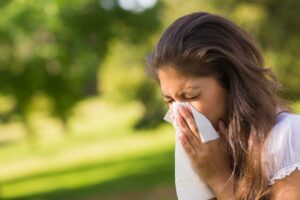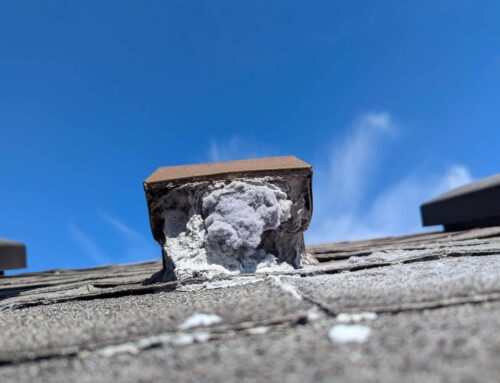Ah, Spring. How we all love to see those baby-soft, bright green sprigs of brand-new grass; fresh buds on the trees; and colorful flowers popping their heads out after a long winter! What we don’t love is the spring allergies. We load up with antihistamines, nasal sprays, eye drops, and headache remedies to fight the dreadful symptoms.
Most people consider their home a haven, where they can escape the ugly effects of spring allergies. Unfortunately, our homes and apartments also harbor all sorts of indoor allergens – with many causing year-round suffering. Regardless of how well we clean, pet dander, dust mites, mold, mildew, and more contribute to poor indoor air quality and trigger bothersome allergy symptoms for so many people. Asthma sufferers, as well as young children and the elderly, tend to be even more susceptible.

According to the Asthma and Allergy Foundation of America, an allergic reaction happens when your body’s natural defense system — the immune system — releases antibodies as it tries to fight off a substance it thinks is harmful. Those antibodies are responsible for allergy symptoms like swollen, itchy, watery eyes; sneezing; runny noses; and even skin rashes. For some people, a sensitive immune system might mistake harmless things, like pet dander or mold, for evil invaders. When people are exposed continuously over long periods may even develop chronic issues like asthma.
However, there’s no need to fret. There are several simple steps you can take to reduce allergens in your home.
Reduce pet dander. Dander can be a tough challenge for pet owners. It can cling to furniture, clothes, walls, and just about any household surface. It can even make its way into your home’s air ducts, where it can then circulate throughout your home. Eliminating pet dander from your home might seem like an impossible task, but regularly cleaning your furniture, carpets, and window coverings can be very effective. Steam cleaning will remove dust and dander both on the surface and deep down. Simply de-cluttering your indoor space will give dander fewer places to hide and make cleaning easier. And finally, regularly bathing your furry friend will send excess dander down the drain, instead of into your home’s air.
Prevent mold and mildew. Mold and mildew can lurk all around your home. To help combat it, ensure your home has sufficient ventilation, use mold inhibitors in your paints, and clean your bathroom and kitchen with mold-busting products. Also, running your air conditioning and using dehumidifiers and air purifiers will help eliminate mold, bacteria, and viruses that thrive in warm, moist conditions.
Get serious about air system filtration. Change air filters every month to ensure your family is breathing clean, fresh, healthy air. Air filters can trap pollutants such as pet dander, dust mites, and tobacco smoke. They work by forcing air through a fine mesh that traps those harmful particles. While they cost more, use HEPA filters, if possible – they’re designed to be even better at catching the tiniest particles of dust, dander, and more.
Schedule air duct cleaning. Just as the surfaces in your home become dirty over time, so can your air ducts. Through everyday life, our homes generate all sorts of contaminants and air pollutants like pet dander, dust, mold, and chemicals. These contaminants circulate in your air ducts and contribute to health issues for those with respiratory conditions, auto-immune disorders, asthma, or allergies. Just like outdoor seasonal allergens, indoor air pollutants cause irritated eyes, nose, and throat, as well as headaches, dizziness, and fatigue. Having your air ducts cleaned can greatly improve your indoor air quality and reduce health problems.




Leave A Comment
You must be logged in to post a comment.